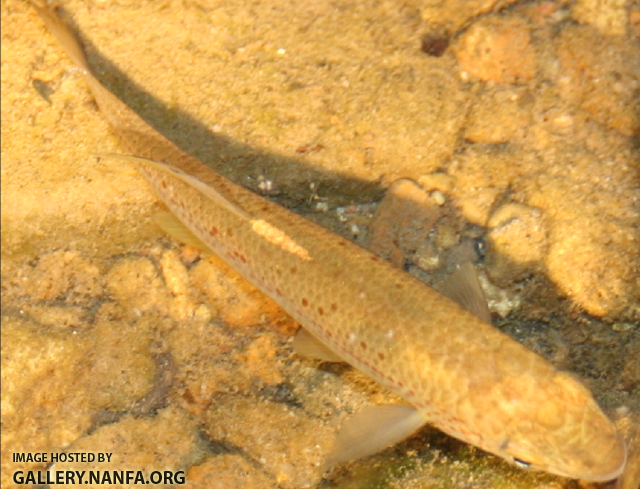I went back for a long trip up Swamp Creek again, and remembered to bring the memory card for my camera this time. I started at the original location and winding my way all the way upstream to the beginning in the mountains. So I will start here at the lower regions. The album for this trip can be found here, which I will add to as I post:
http://gallery.nanfa.../mywan/May-2nd/Lower riffle region:
Gone was the brilliant green filamentous algae on the bottom and the snails are maturing, but it appears to be a different species of physidae than what usually dominates. The usual most abundant appears to be Physa acuta(?) mixed with a with one with a much longer spiral. Apparently the heavy spring rains stripped the snail population clean, allowed an algae bloom, followed by a the snail eggs hatching a new crop of snails. I suspect, based on both river and tank observations, these snails are having a negative effect on green algae that goes beyond simply eating it. These snails usually form a thick coating over nearly the whole bottom of the creek. I also want to know more about which fish are predators of these snails.
Click image for larger version:
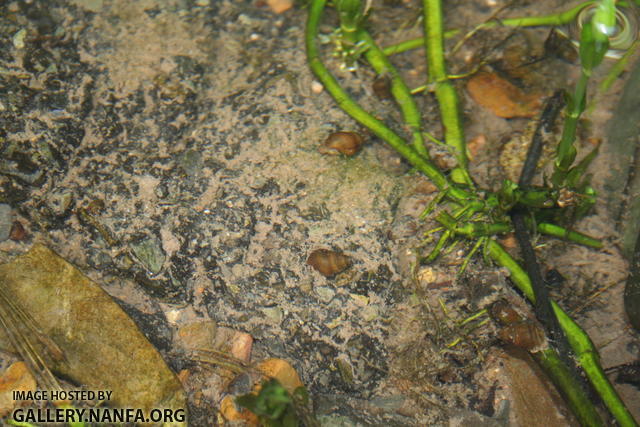
These things, eastern dobsonfly (Corydalus cornutus), were thick (mass emergence) and many stuck wiggling in spider webs over the water. From a distance you could see fish trying to jump high enough to get at the ones struggling in webs. When you catch one it no longer looks like it has white spots but it was impossible to keep them still enough to take a photo. Nice source of fish food but also highly predatory in the larval stage. Most of the white you see in the pic is actually in the web.
Click image for larger version:
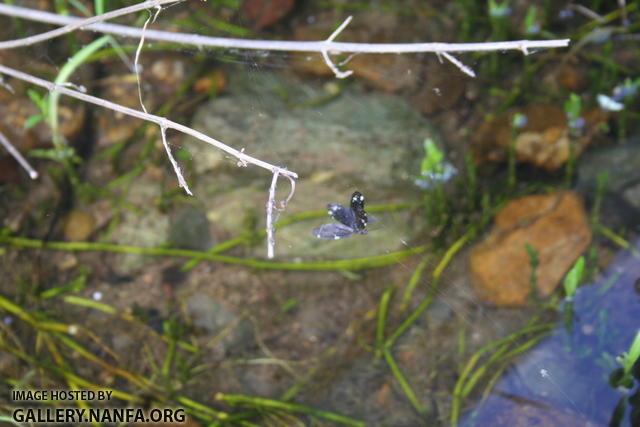
Next up is a very sick unidentified fish (poor thing). Perhaps I can get some help on this but no fish listed for the Conasauga region seemed to fit completely, but perhaps a redhorse of some kind. This one was far easier to sneak up on for photos than any others but it would still meander away if you splashed or moved too fast. Otherwise it would just slowly meander in a small circle.
Click image for larger version:
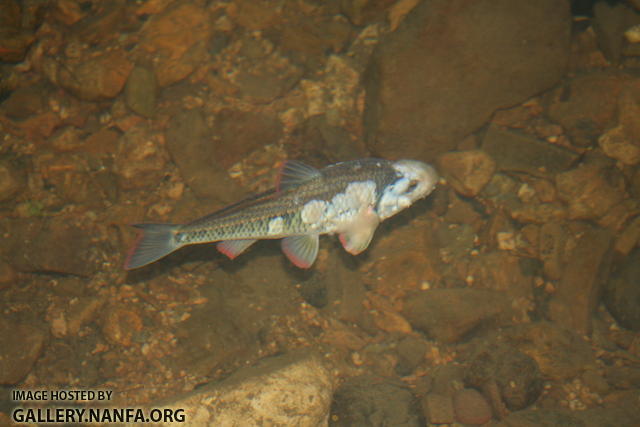
I wonder if the cyanobacteria in the following photo has something to do with the sick fish. This is in a side pool just upstream from the sick fish. Last year is was clean and harbored many tadepoles, but since finding a bag full of dirty diapers in it early last fall it has been like this. I would like to learn more about what this means to the water quality?
Click image for larger version:
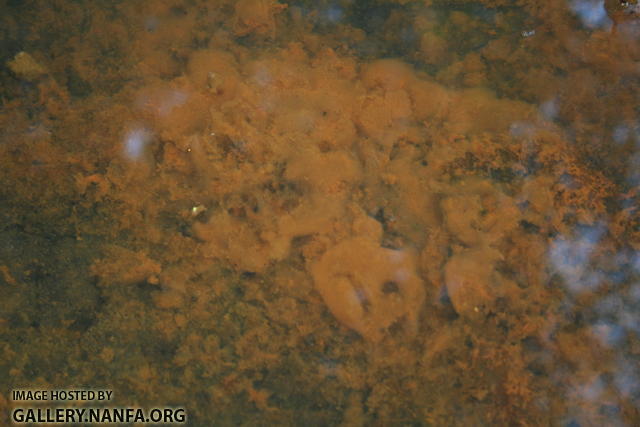
Here is another sad case, but apparently just an accident while going over a little fall. It apparently got wedged in the thick stems as it went over.
Click image for larger version:
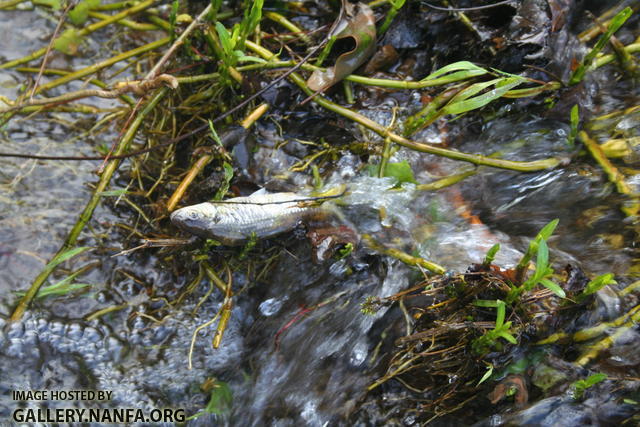
The following fish photos are not nearly as clear as the sick fish. Fish are hard to sneak up on. I also need a better telephoto and a polarized lens filter. I guess I should go ahead and order the polarizer. Here is a redeye bass (Micropterus coosae). You are likely to see more by clicking the image for a larger photo.
EDIT: Wrong pic, wrong location. Likely wrong about ID. This pic belongs with the group upstream in an upcoming postClick image for larger version:
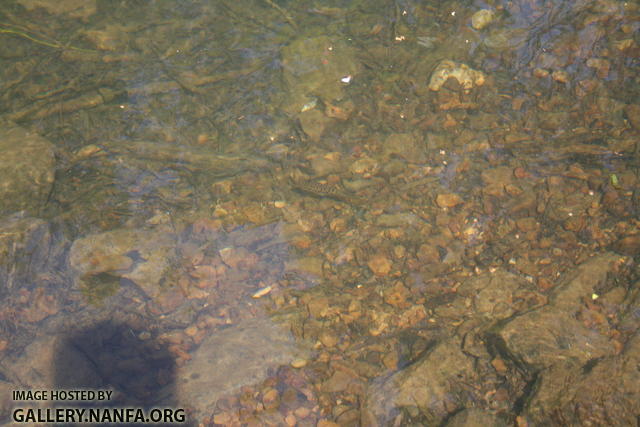
Here is another good redeye bass pic if you zoom in the larger picture. I tried to get the small school it was with in the picture it did not come out that well so I got the school separately.
Click image for larger version:
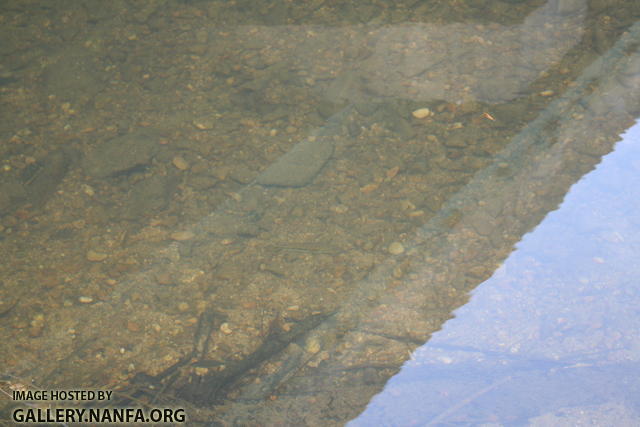
Here is the school near the second redeye bass. You can see the redeye bass to the right near the edge of the shadow. It takes a little patients just to shift my position while only making them a little suspicious and then wait for them to calm down and go back to being fish.
Click image for larger version:
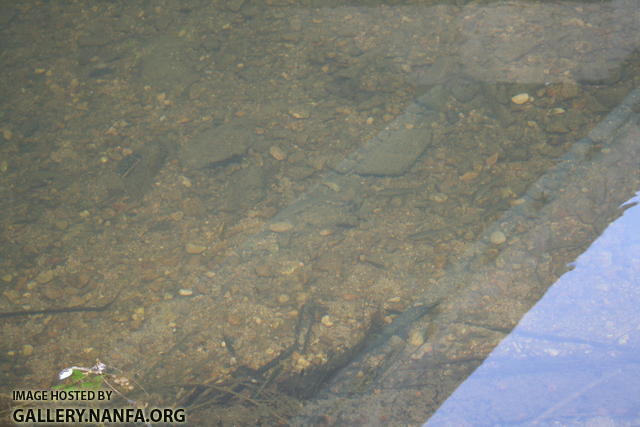
Here is a large sunfish. I have trouble with sunfish IDs but presume this is a redbreast sunfish (Lepomis auritus) based on the fact that the two edges of the black ear flap were parallel and the ear flap angled slightly up and back. It was a bit too cautious for me to get a better angle. Ever time I tried it ended up somewhere other than in the picture. It was fairly large for a redbreast, about 8 inches.
Click image for larger version:
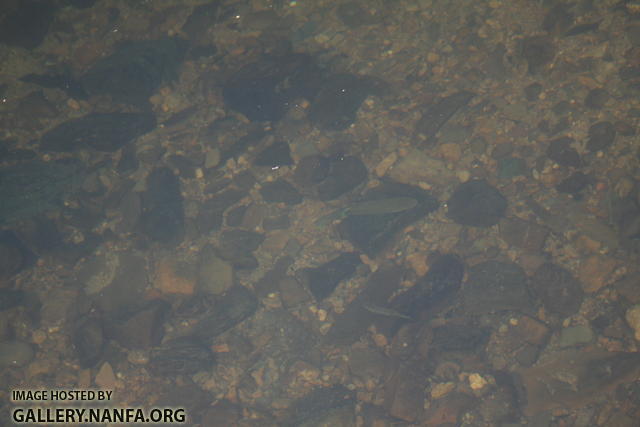
The rest of the fish photos at this location is pretty non-specific or not relevant. I will follow up with some pictures to show perspective here, and then move on to the upstream areas.
Edited by mywan, 02 May 2011 - 06:51 PM.
